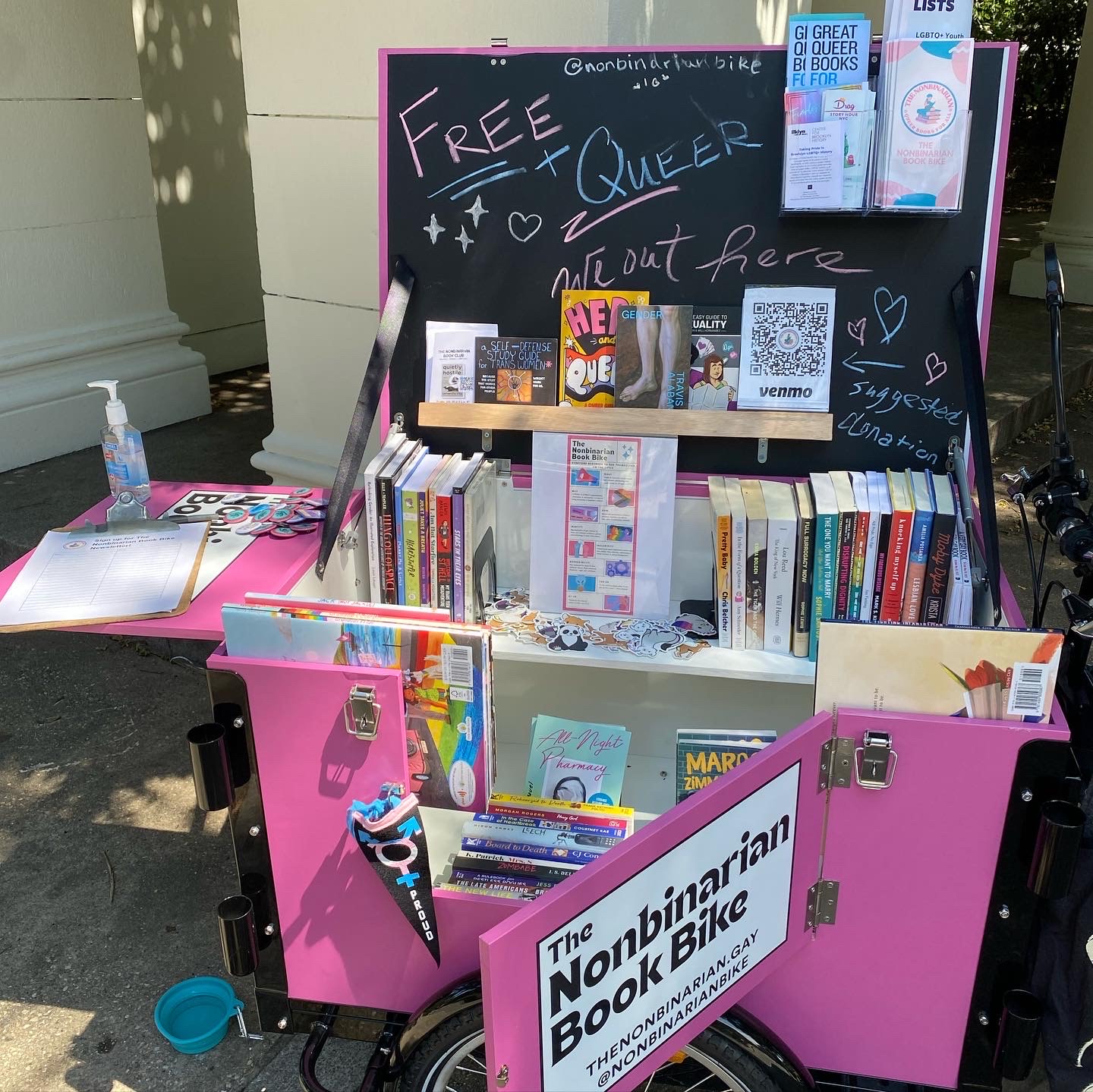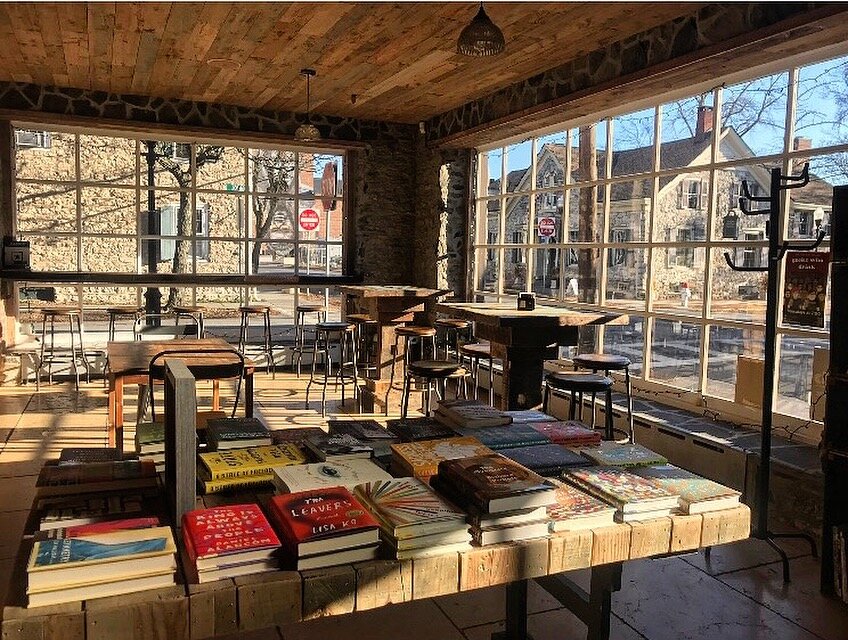interviews
Catching The Beautiful Moments: An Interview With Kate Gavino, Author Of Last Night’s Reading

If you’ve recently been to a reading in New York, you’ve probably been in the same room as Kate Gavino; there’s scarcely a bookish event she hasn’t attended. Gavino is the pen behind the notable tumblr Last Night’s Reading, which is packed with portraits of literature’s most quotable. She’s chronicled authors from every corner of the literary world: Eileen Myles, Valeria Luiselli, Adam Johnson, Daniel José Older — you have a favorite writer, and he or she is likely immortalized in Gavino’s distinctive marker next to a brilliant soundbite.
Sit down with Gavino like I did in a Park Slope coffee shop, and she’s quick to tell you that she’s the stereotypically quiet literary type — more of an observer than anything. That Gavino is a seasoned onlooker, however, is why we’re so lucky to have her silently sketching, chronicling among the seats — she always seems to catch the most poignant moments that sometimes pass by the rest of us. Gavino discussed with me her new book, naturally titled Last Night’s Reading (Penguin Books 2015), a topography-in-quotes of New York’s literary scene over the last few years.
Meredith Turits: I don’t know the story behind Last Night’s Reading — how did you come to start drawing your first portrait?
Kate Gavino: I started out going to readings because they were free, and I loved spending time in bookstores. I’ve always been a doodler, too, so while I was at them, I’d always have a notebook to take notes — but I’d just be doodling. Doodling helps me focus.
I was at a Junot Díaz reading in 2013 and he’s already such a quotable person, but that reading just had so many quotable moments. The quote that really stuck out to me was the one that I eventually used as my first post, which was about the importance of bearing witness to what you see. I’m a pretty quiet person, and I’m always observing, and he talked about the importance of telling people what you’ve seen — it sounds pretty simple, but it can be a lot more important when it’s put in the right context. That spoke to me, because I’m always observing.
I starting posting drawings of the authors, which is what I was doodling while I was at the readings anyway, and it kind of snowballed from there. It seemed to get a good response, so it’s thanks to Junot Díaz in the end!
MT: How did you build your audience on tumblr?
KG: Rachel Fershleiser built such an amazing literary community there, and [they] seemed to immediately embrace it. It also helped that a lot of the authors I draw embraced it, too. They seemed really happy to be drawn! I’m always really worried I’ll draw their nose wrong or something, but I haven’t gotten that response yet.
MT: When you are sitting at a reading, does one quote pop out to you, or do you scribble several down? Do you visualize a line?
KG: I usually scribble a couple of lines down. Sometimes, I’ll record an event. I usually don’t go listen to it unless I’m stumped for a quote, which isn’t necessarily a bad thing — sometimes I’ll find really good quotes that were buried in a long paragraph. For the most part, I usually know what quote I’m going to use right when I hear it. With authors like Junot Díaz, I’ll have pages and pages of things scribbled down — it’s nice to be able to have a lot of choices at the end of the night!
MT: Has the way you attend readings changed, now that you’re something of an archivist, rather than just a spectator?
You really notice the same type of people who go to book readings, and a weird, unspoken etiquette you have to follow.
KG: I don’t think it’s changed too much, and that’s something I really like because it means I can still enjoy going to three or four readings each week — it never feels like work. While I’m there, there are so many other things going on, which is something else I wanted to include in the book. You really notice the same type of people who go to book readings, and a weird, unspoken etiquette you have to follow. I really like having a routine, so the fact that book readings are very unique but at the same time very similar — I like that. It’s probably a good thing that I don’t feel like I’m doing work when I go to them.
MT: There is, of course, some criticism regarding the fact that literary scenes, especially in New York, can be very clique-y. What’s your relationship to the New York literary scene and readings in general?
There’s certainly the “literary fiction” crowd, and they all follow each other on Twitter, but they don’t represent all of the readers in New York. I can’t really see myself as part of just one crowd.
KG: I can understand that criticism, but I mostly just see myself as a reader, and I go to readings because I like that author or that book. I read pretty widely — I’ve been to Comic Con or romance novel readings or fantasy novel readings, and I like seeing all of those mini-subcultures. Sci-Fi fans are totally different than YA fans, so when I see it that way, I don’t really see one “scene.” There’s certainly the “literary fiction” crowd, and they all follow each other on Twitter, but they don’t represent all of the readers in New York. I can’t really see myself as part of just one crowd.
MT: With your foot in so many literary worlds, how do you choose which events you go to and whom you’re going to document?
KG: It’s all based on authors and books I love. Sometimes I will see an author whose books I haven’t read, but who I think is interesting. I haven’t really read a lot of Salman Rushdie, but I’ve seen him three times because I think he’s really interesting, even though I might not always agree with him. There are definitely authors who are really entertaining, who I might see multiple times, because they talk about their work in a funny or interesting way. Sometimes, I’ll pick a reading because I love the bookstore or the particular location, too.
MT: There’s the perpetual question that hangs over literature: Is a reading the best way for an author to present his or her work? I wonder what you think of the answer.
KG: It depends on the author. I’ve seen amazing authors have really boring readings where they’re not connecting with the audience at all or not interested in trying to, but there are other authors where it’s really the best way to reach their audience, because they love interacting with them. I’ve seen some authors, like Chuck Palahniuk, who really makes an effort to make his readings different than your standard format. He’ll have props, weird segues — things like that. That’s fun, too. I’ve been to a lot of really traditional readings — reading from your book then Q&A — but it was super-entertaining because the author puts a lot of thought into their answers and respects the audience’s questions.
I can understand that writers are stereotyped as an introverted group, and maybe they’re not that into crowds and stuff — I’m exactly the same way — but I think a lot of them do appreciate the fact that people are reading their books, and want to connect with them. Right now, readings are a good format for that.
MT: You’ve been to more readings than… well, maybe anyone in New York! You’ve seen a lot of writers. What stereotype of a writer do you think is deserved?
…I think it’s more important to focus on a love of reading, no matter what format.
KG: There are some writers that actively hate anything remotely new like social media that’ll help them promote their books. They think it’s tacky to start a Twitter account. They have a distain for anything new, like e-readers or e-books. They have a very romantic notion for loving books for the way they smell, and I think it’s more important to focus on a love of reading, no matter what format.
MT: Is there one stereotype that you’ve seen dispelled over an aggregation of readings?
KG: I see a lot of “chick lit” writers who brush up against that title who recently have embraced the stereotype because in the end, that is their desired audience. Those are the people who are going to pay money for their books. Those are the people who genuinely enjoy their books, and there’s nothing wrong with that. So, a lot of writers who get stereotyped for writing “trashy fiction” or “airport books” and some mystery authors, too, they don’t really care that some people look down on them because they’ve reached their audience of the people who genuinely love their books. I come from the literary fiction world, so I had that kind of snobbery at first, but when I saw those kinds of authors, I appreciated their work so much more.
MT: On that note, what do you think you appreciate more from about readings because you chronicle them the way you do?
Some of the best quotes I record are when the authors are just rambling a little bit, but they somehow say something beautiful…
KG: [The fact that authors can always] think of things to say off the cuff all the time, because I’m horrible at that. Some of the best quotes I record are when the authors are just rambling a little bit, but they somehow say something beautiful and that’s a talent that I don’t have — and something I really admire. That’s one of my favorite part of going to readings — catching moments like that.
MT: When you were putting together the book, did you have to choose between portraits you’d done, or is this a compendium of everything you’ve drawn?
KG: I got to choose my favorites, but I wanted to make sure that this was at least 50 percent new content. I doubled the number of readings I went to a week, which sounds really intense, but I ended up getting to see a lot of my favorite authors again. I would go to a reading and draw two portraits from that event, and use both in the book. I made the book in about nine months, and in that time I probably doubled my usual workload, because I was really adamant about having new content in the book.
MT: How long does it take you to do a portrait?
KG: Not very long. While I’m at the reading, I’ll do a bunch of sketches, and when I get home, that’s when I’ll do the final portrait. Usually on the subway ride home, I’ve already decided what quote I want to use. Usually it’ll take me 20 or 30 minutes.
MT: Do you reference photos or is it purely from memory?
KG: Only if I had a horrible seat! Usually, it’s just from my sketches.
MT: What do you hope that people will feel, think, or take away from your book when they flip through it?
KG: The most important thing I want people to do is appreciate bookstores more. The book is full of author portraits, but they wouldn’t be there if the bookstores didn’t have those readings. I love seeing my favorite authors, but what I love the most is spending every night in a bookstore. I really wanted the book to be a love letter to those stores. At this point, they feel like a second home to me.









